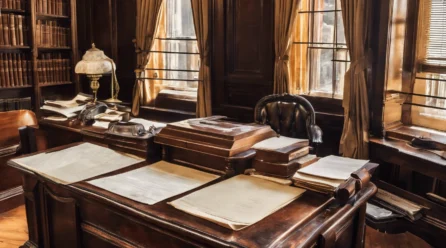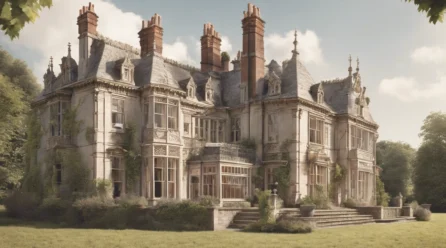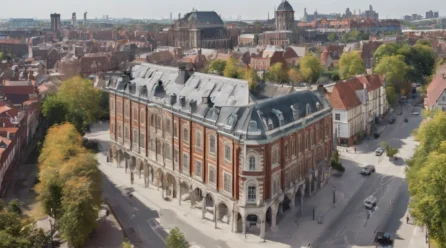Conservation Area Regeneration
Campaigns
“David continues to push for the newly improved adoption and application of these restorative principles and played an active part in the recent Lord Street and Promenade Conservation Area Appraisals that were finalised in 2018 following a public consultation where he embarked upon directly canvassing residents and businesses across the area at the time.”
Conservation Area Advantages
A conservation area is an area that has been designated by the local government as an area of special architectural or historic interest. These areas are protected and preserved, with strict rules and regulations in place to ensure that any development or changes made to the area are sympathetic to its architecture and character. There are many advantages to living in a conservation area.
Conservation areas retain their historical and cultural character, providing a unique sense of place and identity. Property values in these areas tend to be higher due to their desirability and scarcity. Conservation areas offer a high quality of life, with a strong sense of community, and an appreciation for the heritage of the area. They also tend to have lower levels of crime and anti-social behaviour due to the close-knit nature of the community.
Conservation areas provide a sense of pride and responsibility for residents to upkeep and maintain the area. All buildings and structures are required to conform to specific regulations, ensuring that the area retains its historic character, and that any changes are in keeping with the local aesthetic.
Conservation areas are designed to protect and preserve historical buildings and architecture, as well as the unique character of a particular area. However, these areas are increasingly under threat from individuals and organizations that prioritize development over conservation. This has led to continued demolition of buildings, which has not only changed the aesthetic charm but also diluted the social benefit of the areas. Pressure to develop land for economic gain may lead to the loss of the very attributes that make a conservation area special. Demolition is a permanent step, and once lost can never be regained. Preservation of conservation areas is therefore crucial, not only to maintain the historical and architectural value but also to preserve the strong sense of community that these areas provide. While development may be necessary, it should not be at the expense of our cultural heritage and sense of place.
Overall, conservation areas provide a unique and desirable living environment that cannot be replicated elsewhere. They offer a high quality of life, community spirit, and a sense of pride and responsibility for residents.
Campaigns
Conservation Area Appraisals
Comprehensive Conservation Area Appraisals are essential tools for understanding and safeguarding the significance of heritage assets within designated conservation areas. By conducting detailed assessments of architectural features, historical context, and community value, appraisals provide a foundation for informed decision-making and planning interventions that respect and enhance the special character of these areas. Through stakeholder engagement and expert analysis, Conservation Area Appraisals help guide development proposals, preservation efforts, and regeneration initiatives to ensure that the unique heritage of these areas is protected for future generations.
David canvassed extensively the length of the Lord Street boulevard and Promenade to submit his own extensive feedback into the 2017/2018 Appraisals that were duly taken forward and actioned. This included a core focus on a uniform coloured Victorian Verandah scheme, the expansion of the existing heritage zones and an array of heritage literature pertaining to guidance and maintenance that have since been published in conjunction with leading heritage bodies.
At Risk Register Status
Identifying and addressing buildings and sites at risk within conservation areas is crucial for preventing further deterioration and loss of heritage assets. Placing endangered structures on an At Risk Register raises awareness of their vulnerable status and mobilizes efforts to secure their preservation through targeted interventions. By prioritizing resources, engaging stakeholders, and implementing conservation strategies, At Risk Register initiatives aim to rescue and restore historically significant buildings, landscapes, and features, thereby safeguarding the authenticity and character of conservation areas.
David has worked hard since 2014 to ensure as many areas as possible have been removed from the At Risk register. Since that time a large contingent have been removed, especially in Southport where much of David’s restorative focus has been focused to date.
Public & Private Sector Partnership
Successful Conservation Area Regeneration relies on effective collaboration between the public and private sectors to leverage resources, expertise, and investments for heritage-led development projects. Public sector agencies, local authorities, heritage organizations, and private developers can work together to fund conservation initiatives, implement restoration works, and promote sustainable regeneration practices that respect the heritage values of conservation areas. By fostering partnerships based on shared goals and mutual benefit, stakeholders can unlock the potential for revitalizing conservation areas while fostering economic growth, social cohesion, and community pride.
David has always and will always seek to combine the joint efforts of the Public and Private Sectors in order to harness the greatest possible benefits for society. This is a regular facet of his campaigning which endures to this day and can be seen in any one of his ventures.
Return of Lost Features
Restoring and reintroducing lost architectural features, historic elements, and cultural assets within conservation areas can breathe new life into these cherished places and revitalize their sense of identity and character. Efforts to return lost features, such as traditional building materials, period lighting, street furniture, and green spaces, can enhance the visual coherence and authenticity of conservation areas, creating a harmonious blend of past and present. By reclaiming and reinstating elements that contribute to the unique charm and heritage significance of these areas, the return of lost features celebrates the continuity of history and fosters a renewed appreciation for the cultural legacy embedded within conservation areas.
David has secured the re-establishment of many lost details on civic buildings be it the fascia frontages or the accompanying Victorian Verandahs. He is working towards improved Planning legislation that will simplify and streamline the ability to include these on new construction besides old construction through his efforts to expand on the work of legendary pioneer and scholar the late Sir Roger Scruton.
Related Posts
Conservation Area Bills
To preserve the country’s natural resources and protect various geographical areas, different conservation bills have been passed....
Levelling Up Bill
The "Levelling Up Bill" is a piece of proposed legislation by the UK government aimed at addressing regional disparities across the country....
Existing Laws in UK to support Conservation
The UK has several existing laws and regulations in place to support conservation of buildings and the environment....
Recognition by Key Companies
Companies like Disney often seek out areas with a unique history and cultural background to use as settings for their productions....
Conservation Area Challenges
Conservation areas can face numerous challenges, including a lack of resources for upkeep, gentrification, and threats of development....
Conservation Area Advantages
A conservation area is an area that has been designated by the local government as an area of special architectural or historic interest....






